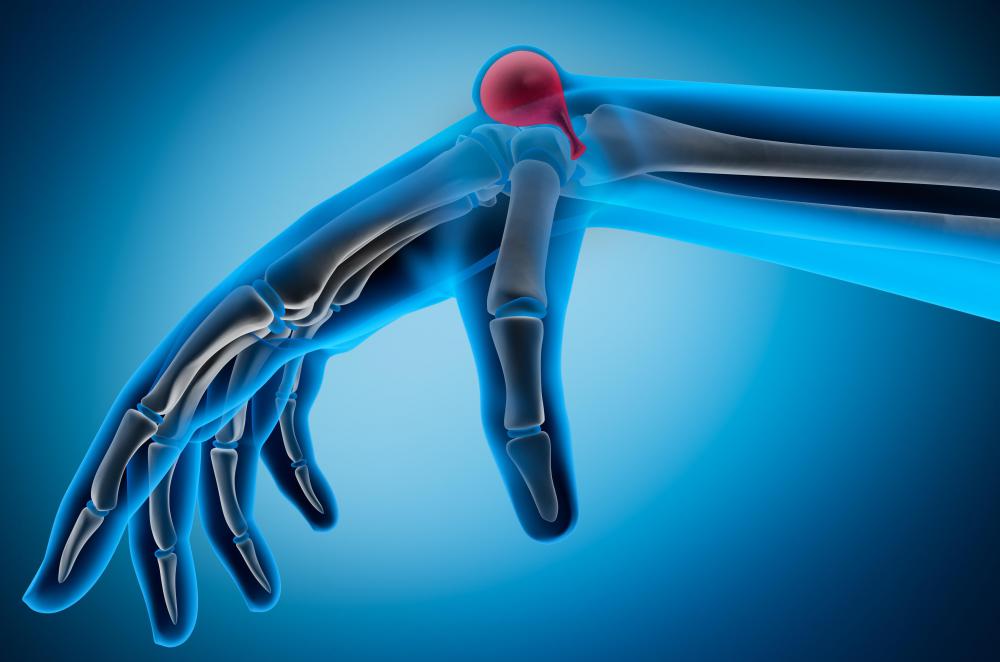At WiseGEEK, we're committed to delivering accurate, trustworthy information. Our expert-authored content is rigorously fact-checked and sourced from credible authorities. Discover how we uphold the highest standards in providing you with reliable knowledge.
What is a Dorsal Ganglion?
A dorsal ganglion is a cyst on the back of the wrist. This cyst is filled with a clear, jellylike substance and might be painful or uncomfortable to the touch. Dorsal ganglions are not cancerous, and they are not tumors. Often, they will go away on their own, but treatments are available to decrease discomfort caused by a dorsal ganglion.
A ganglion is called a dorsal ganglion only if it is located on the back of the wrist, meaning that it is visible when the hand is placed palm-side down on a table. Ganglions on the inside of the wrist are called volar ganglions. Ganglion cysts also might form on other parts of the body. The most common sites are the hands, fingers, feet, ankles, knees and shoulders.

Dorsal ganglions and other ganglions form when liquid leaks out of a joint capsule or out of the sheaths that cover tendons. The escaped liquid gets trapped under the skin, causing a visible bump. Doctors are unsure what causes these leaks. The condition is often linked to repetitive motion, joint or tendon injury and inflammation. Joint diseases, such as osteoarthritis, also might contribute to dorsal ganglions.

Dorsal ganglions often appear seemingly overnight. They look like a small knotlike mass just under the skin on the back of the hand. This mass might be painful to the touch or become more painful with motion of the wrist. Sometimes there is no pain at all.
Over days or weeks, the dorsal ganglion might grow. Movement of the wrist pushes more liquid out of the joint capsule or tendon and into the dorsal ganglion, causing the cyst to grow. Growth might then cause pain as the added liquid exerts pressure on the joints and tendons.

A dorsal ganglion can be diagnosed by a doctor, who usually can tell just by looking at the size, shape and location of a bump whether it is a dorsal ganglion. One diagnostic test is to shine a light next to the bump. If the light shines through the bump, it is a ganglion.
Treatment for ganglions usually is simple and non-invasive. Most ganglions go away on their own. If the ganglion causes pain, however, the doctor might recommend a splint to limit movement and keep the ganglion from growing. A doctor might choose to drain a more severe ganglion using a needle and syringe. Massaging the lump also can cause the ganglion to release fluid.
AS FEATURED ON:
AS FEATURED ON:














Discuss this Article
Post your comments